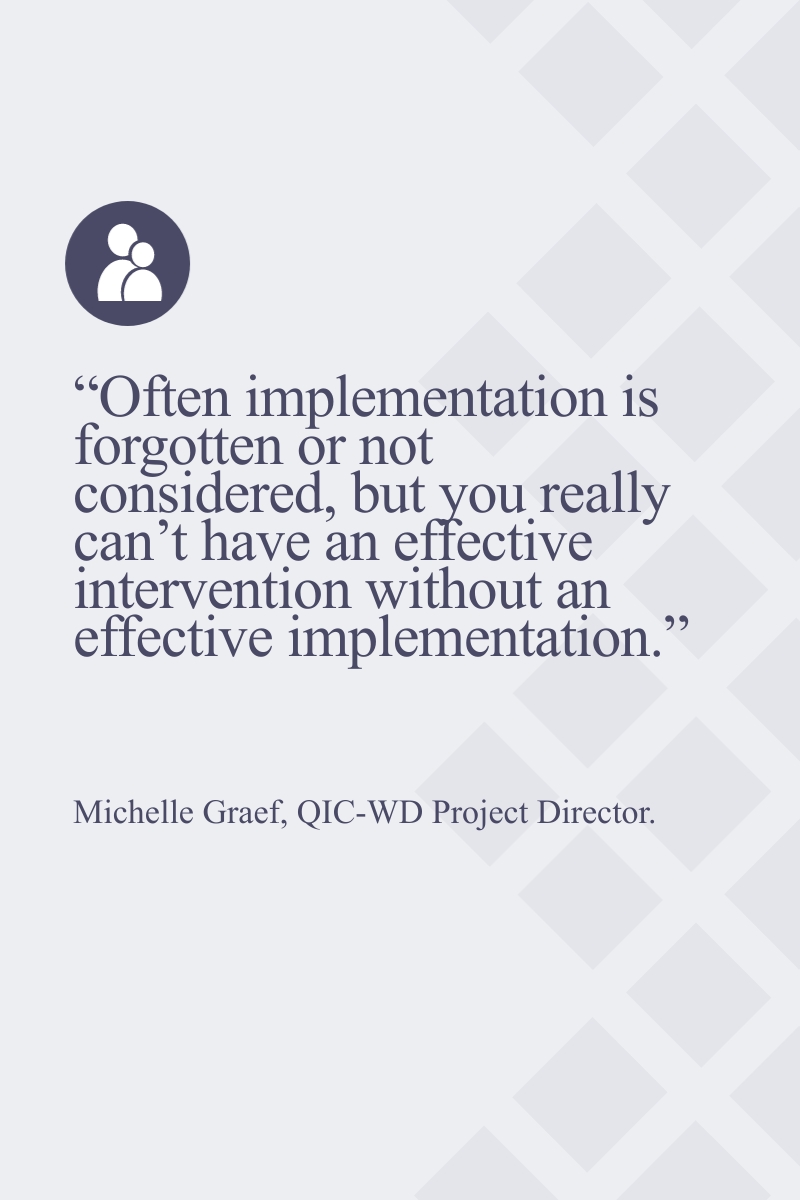How Can Public Child Welfare Agencies Get and Keep a Great Workforce?
Public child welfare agencies continue to face complex challenges including high workforce turnover. An examination of federal data found that, from 2003 to 2015, states experienced 14-22% annual turnover rates, with caseworkers staying on the job for an average of 1.8 years. Such turnover increases workloads for remaining workers and negatively impacts children and families. The QIC-WD is working with eight jurisdictions to better understand turnover and test interventions to improve workforce retention. The following tips were compiled based on  the experience of QIC-WD sites. They are intended to help child welfare administrators, state legislators, or other local policymakers consider strategies to reduce worker turnover.
the experience of QIC-WD sites. They are intended to help child welfare administrators, state legislators, or other local policymakers consider strategies to reduce worker turnover.
- Bring Human Resources (HR) directors and child welfare agency leaders to the table to understand the challenges of the child welfare workforce.
- Calculate workforce turnover accurately and consistently. There are many ways to calculate turnover. Understanding what is being measured is essential to measuring workforce stability. The QIC-WD calculates turnover as the number of employees who have left divided by the number of employees overall, times 100 to arrive at a percentage. However, this calculation is more complicated than it may seem as explained in this video. For example, what constitutes leaving an agency? (e.g., Is it internal - leaving the position, the region, the area, the division? Is it external – leaving the agency altogether?). Leaders should also examine the time period that you wish to measure turnover and ensure that your measurements are consistent (e.g., an annual measure or a monthly count).
- Understand and define why employees are leaving the agency. Questions to consider include: 1) Is the employee departure voluntary or involuntary? 2) Is the departure avoidable or unavoidable? 3) Is the departure functional or dysfunctional?
- Measure the characteristics of employees who leave the job. What are the patterns around age, gender, race, education and other factors that are associated with workers leaving their jobs? When are employees leaving – soon after hire, during training, or after caseloads become heavier? Does leaving vary by location, specific supervisory unit, or by specific job or job duties? Understanding these characteristics can help leaders determine what changes may address turnover, such as a revised hiring process, onboarding, or training.

- Engage workers in a comprehensive needs assessment that examines human resources (HR) data and includes conversations about their perceptions of the causes of turnover. Once agencies have identified root causes of turnover, they should select promising solutions. The QIC-WD is working with eight jurisdictions to implement and evaluate a range of interventions to strengthen the workforce.
- Gain buy-in and support from agency leaders and frontline workers. Their combined voices and perspectives are crucial in any effort to examine and address worker turnover.
- Pay attention to implementation. The QIC-WD used implementation teams that include employees from all levels of the agency to guide implementation using a structured process, provide in-depth feedback, and promote buy-in.
- Evaluate your intervention. Too often workforce strategies are tried but not tested. A thoughtful evaluation will build knowledge and understanding of turnover strategies.
Child welfare workforce turnover is a persistent, expensive problem. Understanding the available data and spending time examining the root causes of turnover can help policymakers determine which strategies are likely to be effective in their jurisdiction.